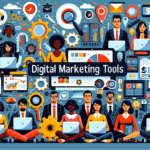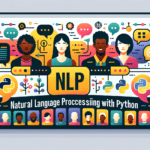Introduction
In the fast-paced startup ecosystem, time is a currency more valuable than gold. Rapid prototyping has become the holy grail for startups aiming to turn ideas into viable products swiftly. In this blog, we’ll dive into the world of rapid prototyping, exploring tools and techniques that are accelerating the journey from concept to market-ready product.
The Essence of Rapid Prototyping
Rapid prototyping is more than just a buzzword; it’s a philosophy. It’s about quickly creating representations of a product to test and refine concepts without investing extensive time and resources. This approach is crucial in the startup world, where agility and adaptability are key to survival and success.
Why Rapid Prototyping?
- Speed: It significantly reduces development time.
- Feedback: Early and frequent feedback leads to better final products.
- Cost-Effective: Saves money by identifying issues early.
- Innovation: Encourages creative solutions and risk-taking.
Tools of the Trade
The right tools can make or break your prototyping process. Here’s a roundup of some game-changers:
Software Tools
- Sketch: Ideal for interface design, offering a vast library of templates and plugins.
- InVision: Allows for creating interactive prototypes with ease.
- Adobe XD: A versatile tool for designing, prototyping, and sharing.
- Figma: Great for collaborative design and prototyping.
Hardware Tools
- 3D Printers: For physical product prototypes, 3D printers like MakerBot provide a quick way to bring designs to life.
- CNC Machines: For more detailed and robust prototypes, CNC machines offer precision.
Techniques for Rapid Prototyping
- MVP (Minimum Viable Product): Focus on the core functionality to test your product hypothesis.
- Storyboarding: Visually map out the user’s journey with your product.
- Wireframing: Create the blueprint of your digital product.
- User Testing: Gather feedback from real users early and often.
Best Practices
- Iterate Quickly: Don’t get too attached to a single version.
- Be Open to Feedback: Use feedback to guide your iterations.
- Collaborate: Foster a team environment that encourages sharing ideas.
- Stay Focused: Keep the end goal in sight.
Case Studies
Startup A’s Success Story
Startup A used rapid prototyping to test its app idea. By creating a series of quick iterations based on user feedback, they were able to pivot and refine their concept, leading to a successful launch.
Startup B’s Learning Curve
Startup B initially resisted rapid prototyping, leading to longer development cycles. However, upon embracing rapid iteration techniques, they saw a marked improvement in product quality and user satisfaction.
The Future of Rapid Prototyping
Emerging technologies like AI and VR are set to take rapid prototyping to new heights. AI can automate parts of the prototyping process, while VR can create immersive prototypes for products like never before.
Conclusion
Rapid prototyping is an indispensable part of the startup toolkit. By embracing the right tools and techniques, startups can navigate the complex product development process more effectively, making the journey from concept to market much smoother.




